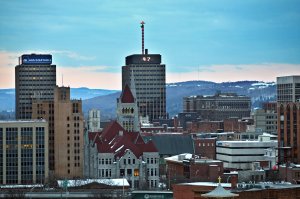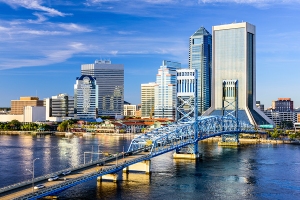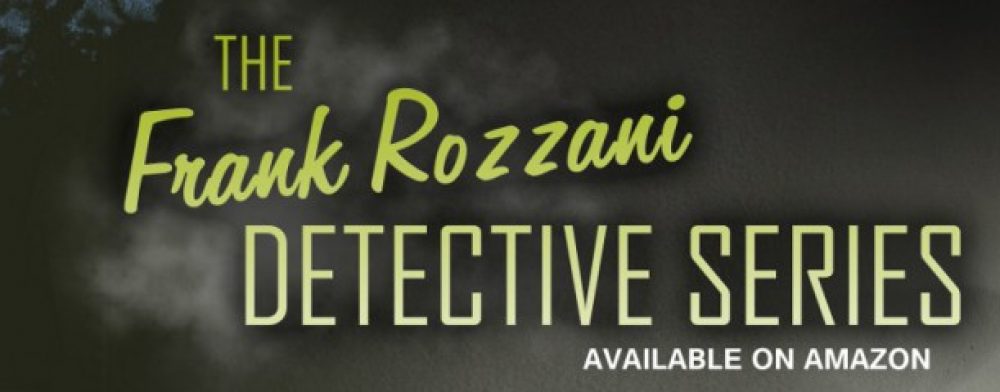One of the most important aspects of your writing is the setting. You want to accomplish a couple of things when you write about a particular place. First, you want to give your reader a sense of the place you are writing about in a descriptive way that transports them there. There are books I have read that have made me feel that I was experiencing the place even if I hadn’t been there. One of my favorites, To Kill a Mockingbird, made me feel the humidity of Alabama. The Shining gave me a chill through Stephen King’s description of the unrelenting winter around the Overlook Hotel.
There are authors that excel at describing their surroundings. Dean Koontz is especially astute at describing indigenous vegetation in California, where many of his books are set. In his Odd Thomas series, the fictional California desert town of Pico Mundo comes to life and becomes a character in the story.
Koontz is especially good at using setting as a character, but he is also known for over-describing elements of the setting sometimes taking a page to describe a particular type of tree.
Using the familiar:
 I have lived in two places over the course of my life. I lived in the city of Syracuse, New York, in the center of the state, for the first 33 years of my life. The city is known for its lakes, its cloudy, rainy weather (second only to Seattle) and its snow. Syracuse and Buffalo, New York are usually contenders for the snowiest cities in the United States each year. The area also has some of the most beautiful summer weather in the country even though there are precious few of those days.
I have lived in two places over the course of my life. I lived in the city of Syracuse, New York, in the center of the state, for the first 33 years of my life. The city is known for its lakes, its cloudy, rainy weather (second only to Seattle) and its snow. Syracuse and Buffalo, New York are usually contenders for the snowiest cities in the United States each year. The area also has some of the most beautiful summer weather in the country even though there are precious few of those days.

About 22 years ago, I moved to Jacksonville, Florida in a state that has a reputation for beaches, sunshine, tourists and embarrassing news stories. All of those things exist in Jacksonville except for the tourism. The cost of living is low, the weather is beautiful and I haven’t had to shovel snow since we moved.
It makes sense that my first book, Frankly Speaking, featured a main character that grew up in Syracuse and, as an adult, moved to Jacksonville, Florida. I knew both locations very well and used my experience to describe them in the book. This experience gave credibility to the setting.
In my day job, I’m ‘lucky’ enough to travel all over the United States. I travel 45 weeks per year and have been to 46 of the 50 United States. Very often I spend 2-3 months traveling to each location and this has given me the opportunity to explore many U.S. cities and use them as settings or file away details for future stories and books.
Using Technology:
When I wrote my second book, Let Me Be Frank, I had the urge to explore the life of one of my secondary characters. Samuel ‘Fat Sam’ Monreaux is an entrepreneur from New Orleans that also settled in Jacksonville. Part of the book involves the main characters driving around the U.S. Gulf Coast with significant action taking place in New Orleans. I had been to New Orleans a couple of times, but not enough to know the area well. This is where the Internet and services like Google Street View came in handy. I was able to get an aerial and street view of the French Quarter’s police headquarters and use it in the story.
Because I travel so much, I’ve started to record interesting places with both my cell phone (as a camera) and a little notebook where I can describe important details like sounds, sights and smells for use in future stories.
How about you? Do you invent locations? Use locations from your own experience? Do you travel and research locations? Please share your tips and tricks.



I feel likewise esp when i read Fitzgerald’s books (tender is the night)
I actually thought I’ve been there
And it’s really important to give people a virtual tour of the place you write about.
Wonderful read👍
LikeLiked by 1 person
Thanks for the kind words.
LikeLike
Reblogged this on DSM Publications and commented:
Check out this post from my author blog.
LikeLike
Since most of my books don’t involve Earth, I need to create settings from the ether. Good to hit as many senses as I can when doing the initial description. This draws the reader in as long as they’re willing to drift away from reality. For the series that takes place on Earth, I used Google maps to get a visual and then researched. It was more to get main landmarks and unique quirks of the area since it was a post-disaster world. The internet is definitely an essential tool for this since most people can’t afford to travel to settings on a whim.
LikeLiked by 1 person
Charles, you are wonderful at building worlds. I haven’t attempted this yet other than inventing the town of Langerton, PA in my book, Extra Innings, but that was based on an idealized memory of my own home town. Yes, Google Maps is my friend when using real locations, especially Street View
LikeLike
Sometimes towns in the real world are harder to make than ones on a fantasy world. You need to factor existing topography and culture with reality. Takes a lot more research.
LikeLiked by 1 person
Very true. I have the “benefit” of travel every week. It’s a treasure trove of location and character research.
LikeLike
Lucky. I think. You did use air quotes.
LikeLike
My travel is mostly me waking up in a Marriott somewhere trying to remember what city I’m in.
LikeLike
I’d say check the weather channel, but that doesn’t always work.
LikeLiked by 1 person
Reblogged this on Anna Dobritt — Author.
LikeLiked by 1 person
Thanks for sharing this, Anna
LikeLike
Stay warm.
LikeLike
I have a few books that are global—and I haven’t had the pleasure of visiting where these stories were set. Internet research was crucial. No one has told me I didn’t get it right, so I’m guessing everything’s okay. Visiting would have been nicer, but research got the job done.
That said, many of my novels are set in Western Pennsylvania (real places and made up). That’s where I grew up, it’s one of my favorite places in the world, and it’s easy for me to make those settings authentic. So I’d have to say it’s easier to write about places you’ve been, but it’s not impossible to write about places you haven’t been.
Great post, Don.
LikeLiked by 1 person
I’m working on a book set in Italy. I went there this summer and spent a lot of time taking pictures and making notes about different locations. It’s an interesting endeavor.
LikeLike
Thanks for this interesting post on researching locations for stories, Don. I once wrote a story about a man living and working in Chicago. My daughter and her husband live there and she helped with details. 🙂 — Suzanne
LikeLiked by 1 person
You’re welcome. Your research can take many forms. It’s just important that you do some.
LikeLiked by 1 person
In my Amanda Travels series, I use the interesting places I have visited in my travels as the setting for each book. I try to describe each place based on my impressions. Since the books are for children, I have to limit the description as they would never read a book that took a page to describe one tree. I was very pleased when a woman who had been raised in the United Arab Emirates read my first book, that takes place there, and said she felt like she was back home. I too use my notes and pictures to help me write the descriptions.
LikeLiked by 1 person
That’s a great way to teach children about different locales. Thanks for sharing.
LikeLiked by 1 person
My Will Diaz stories are set 100% in the real world and that means that in 99% of all the cases, I’ve been there. That said, there’s still a few places I do a lot of recon on. An example would be going down a street I’m unfamiliar with. Thank you Google Earth because I can drop into a neighborhood and look it over, and know with where homes and etc are. But one reason I’m an advocate of going there is each place has a feel to it, the sounds, the smell of the air, and etc., things you won’t get with Google Earth. An example was when I did some recon for Family Secrets. A chunk of the first book is set in Las Sauces, Colorado. Walking around, I could smell the river, and the fields, and hear the buzz of a rattlesnake a ways away. Or see the evidence of bats, or the line of sight between places. Since the places are real, they have to feel real, and if I step away from the, I need to know I’m doing that.
LikeLiked by 1 person
Thanks for sharing your process. It sounds great.
LikeLike
Pingback: Author Inspiration and This Week’s Writing Links – Staci Troilo
Pingback: Seven Links Traci Kenworth – Where Genres Collide
I tend to write my stories in fictional versions of places to give myself leeway with accuracy
LikeLiked by 1 person
Interesting
LikeLike
I usually can’t go where my stories happen – in other countries, on other continents – and even if I went, the places wouldn’t look like they look now (given I am writing mostly historical fiction). So I prefer researching instead. A thorough research. And today’s possibilities, including youtube, google maps, tourist books, history books, etc. are wonderful!
LikeLiked by 1 person
Good insight into your process, Marina. Thank you.
LikeLiked by 1 person